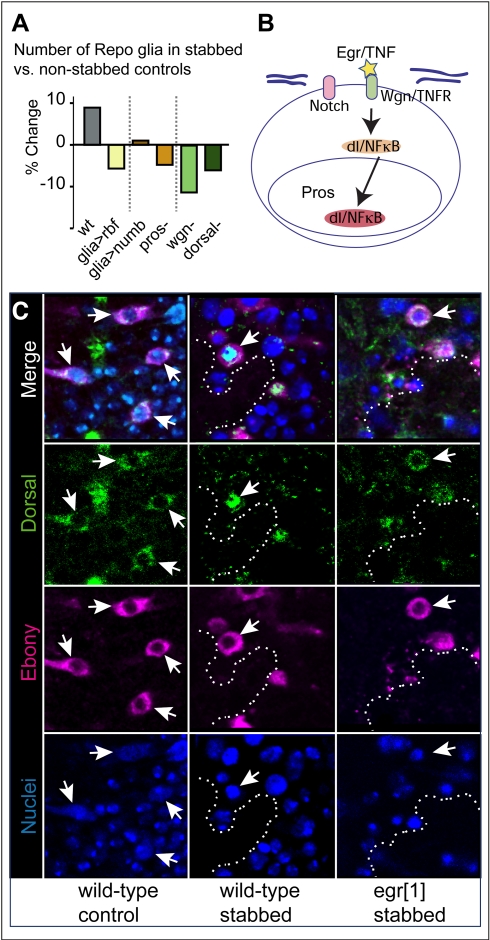Figure 5. The glial regenerative response requires Pros, Notch, Egr/TNF, Wgn/TNFR, and Dorsal/NFκB.
(A) Bars represent percentage change in the number of Repo+ glia in stabbed abdominal VNCs normalised over non-stabbed controls of the respective genotypes. The glial proliferative response to injury is abolished in larvae expressing Rbf or numb in glia, and in pros, wgn and dorsal mutant larvae. (B) Diagram showing that stabbing injury induces Egr/TNF, which binds Wgn/TNFR and activates Dorsal/NFκB, which is translocated to the nucleus, where it functions as a transcription factor. (C) In the wild-type non-stabbed control VNC, Dorsal is cytoplasmic in Ebony+ IG (arrows). Intense nuclear Dorsal is observed in stabbed wild-type (arrows), but not in egr1 mutant larvae, where Dorsal remains cytoplasmic (arrows). Longitudinal sections. Nuclear dye is Hoechst33342. Dashed lines indicate lesion boundaries. Sample sizes, statistical tests, and p values are given in Table S1. Genotypes from left to right: (A) (1) yw; (2) repoGAL4/UASrbf280; (3) repoGAL4/UASnumb; (4) prosvoila1/prosS044116; (5) Df(1)Exel7463/wgne00637; and (6) dorsal1/dorsalH. (C) (1,2) yw; (3) egr1.

